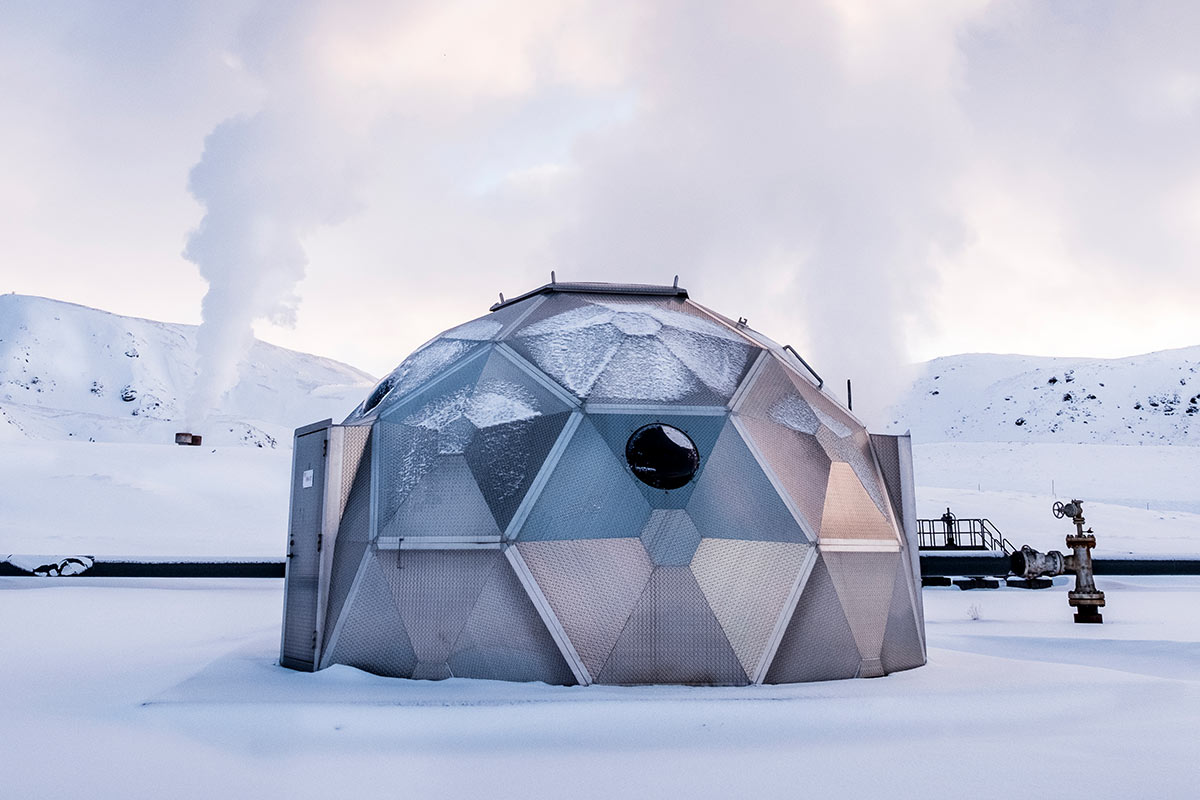
How do we tell the climate story?
Hope or despair – what stories about climate change will drive change? Swedish papers Aftonbladet och Svenska Dagbladet tried different ways – when interest from the audience is stronger than ever.
Is it time for a new chronology? Ante and Post Greta.
Before the teenager had made youth all over the world go on strike, the interest in climate journalism was weak. Now, it’s the other way around. Readers and viewers can’t have enough.
By now Sweden is the world champion in climate journalism, at least if we include Greta Thunberg in our blue and yellow team. Her engagement has made people around the globe listen and willy-nilly start reflecting about their own lifestyle. Greta Thunberg’s speech at the UN Climate meeting in New York in September was, in the Guardian, being compared to Abraham Lincoln’s historic and rhetorically perfect speech in 1863 on the Gettysburg battlefield.
“How dare you?” will forever be associated with the Swedish teenager who dared tell off the power, the elite and the politicians in front of the whole world. After that, many people felt an urge to make their voices heard.
On Twitter, almost a million messages were posted in the 24 hours following the speech and her 17 postings on Instagram during her journey to the US had 12 million interactions, more than double the number president Donald Trump received in the same period, according to Retriever, a monitoring firm.
Things are going well now. At least for the journalistic climate coverage which after years of going down now is as self-evident to Swedish media people as covering sports, politics or the stock exchange. In 2018 there were 85.000 articles written with the climate in focus, twice as many as in 2014 and the forecasts continue to point upwards. In the first half of 2019 there were nearly 60.000 pieces, which is more than the full year 2016.
A kitchen table dilemma
Of course, everything sticks together. Where the debate is, there are the readers. When Donald Trump is belittling Greta Thunberg, the enthusiasm is sky high. Her call to strike becomes a kitchen table dilemma for parents both in Sweden and the USA. Scientists are underlining the need for change of lifestyle in the Western world to diminish our ecological footprints and possibly reach the target from the Paris Conference xof 1.5 degrees increase in global warming
Alarms are sounded. Debating is intense. Garbage is being sorted. Guilt and shame. Engagement and numbness. Facts galore.
What is it then that we in the media should tell the public? Is it the dystopian stories in the wake of climate change or should we focus on the innovations that can stop the global warming ? Is it hope or despair that drives change? And should it affect what is being written and presented by the media?

Photo: Magnus Wennman
All of Schibsted’s newspapers have an extensive climate coverage. In Sweden both Aftonbladet and and Svenska Dagbladet have put big efforts into storytelling journalism also outside the feverish news stream. Both feature series “Their Planet-the Climate and our Guilt” and “Climate change-the innovations that lead the way” have attracted much attention without surfing on the Greta Wave or, favoring anybody or to practice planless noise-making.
The Aftonbladet reporter Erik Wiman and photographer Magnus Wennman went west to tell what happens to people in the wake of climate change and how the next generation is affected by our lifestyle. The project starts in what was once the ashes of the bone dry little town of Paradise in California.
“We arrived in Paradise just as men and women dressed in white protective clothing went about in search of human remains. Those were almost surrealistic days. A town that, within a few hours, ceased to exist.
We built our story on a woman who had a child in the night before the fire came. With the baby in her arms she drove her car through the flames, out of the town. It is one of the most shattering witness story I have ever heard”, Erik Wiman says.
The result is a brilliant piece of journalism bearing witness of how global warming is a burning issue which should be reported from different perspectives to grab a hold of people and to be made visible. The picture language is unique; combining feature photography and art. On the body of the baby a silhouette of a forest is projected. A blood circulation that was nearly extinguished before life had begun. The pictures remind us of who must take the blow of our choices: the children.
What was it that you primarily wanted to describe in “Their Planet”?
“I regard climate journalism as any other kind of journalism. I always look for people who can give a voice and a face to a figure, an event or a phenomenon that I want to highlight”, Erik Wiman says.
Svenska Dagbladet has partly chosen another path. Instead of following the tracks of climate change the photographer Magnus Hjalmarson Neideman and I have been looking for possible solutions that could stop the global warming; the innovations that might be able to save our planet as we know it. That took us among other places to the worlds largest thermic sunpower station in Sahara and to Iceland where carbon dioxide is being sucked out of the atmosphere and then pumped back into the bedrock where it is mineralized in a matter of just a few months. In the assignment the moving pictures have been in focus. Therefore, each journey has, in addition to an extensive feature story, also resulted in a short documentary.
“It is so much more complicated and time-consuming to be taking pictures, filming and flying a drone simultaneously But it has gone fantastically well and we have really reached out with our films, not least to younger viewers”, says Magnus Hjalmarson Neideman. And he adds: “Then it is a nuisance to always have to have the camera on a tripod. But these are new times and if you want to be sustainable you just have to
hang in there.”

Photo: Magnus Hjalmarson Neideman
Fantastic photos, creative reporting, films and graphics that are tastefully presented on the net seems to be a way of describing this global development besides the ordinary reporting of news. Because now, as the percentage of carbon dioxide in the atmosphere has reached its highest level in 800.000 years and the average temperature of the earth is continuing to increase, more and more people are beginning too understand that it is important, urgent and necessary to understand the complexity in order to be able to act and not just succumb to flying shame or the burden of sorting the garbage.
My understanding of the force in telling good stories, the importance of also nurturing hope came to me as I was trying to console a little girl who had watched a nature film where all the animals were under threat. They were emaciated, vomiting plastic and succumbing to draught. What was her future going to be like? Was there any point at all in carrying on if a planetary garbage dump was all that was left? Her tears were flowing and I had no good answer.
Do I have that now?
After having travelled the world, studied everything from the problem with batteries and renewable sources of energy to the challenges for the transport sector, climate-smart food and, on top of that have talked with many foremost researchers, an answer has gradually appeared.
Resilience ought to be the 11th Commandment when the planet has a fever and when our eco systems are on the verge of collapse.
Actually, the voices have become more and more coherent after decades of sounding the climate alarm. Resilience ought to be the 11th Commandment when the planet has a fever and when our eco systems are on the verge of collapse. We still don’t know where the tipping point is, when the systems are bolting and there is no way to stop the warming regardless how we try. But no one can claim that they did not know where we were heading. On the day it happens, if it happens.
But I am not the one you should listen to, but, just as Greta Thunberg says, you should listen to the researchers. And they increasingly agreeing on what is happening and why. At the same time the technology is there. Millions have recently demonstrated the will of the people globally. The economic incentives are getting more and more clear. The media are reacting and upgrading – while politics is still lagging behind in some places.
Abraham Lincoln’s famous speech, The Gettysburg Address, established that all men are created equal, that the country shall have a new birth of freedom with a government of the people, by the people, for the people and that the people shall not perish from the earth.” Greta Thunberg declared that the world is about to wake up and the change is on the way.
The task for journalists is always to describe the world around us, to put questions, tell stories and hold the forces of power responsible. But to compare Greta Thunberg to Abraham Lincoln! Yes, how dare I?

Erica Treijs
Reporter, Svenska Dagbladet
Years in Schibsted
22
My dream job as a child
Pippi Longstocking, or dolphin trainer